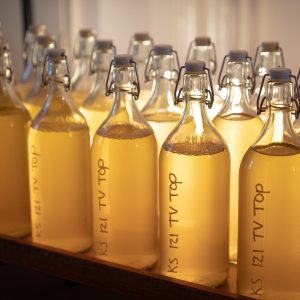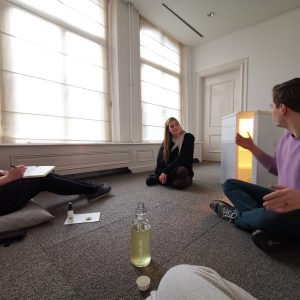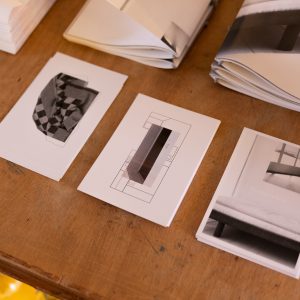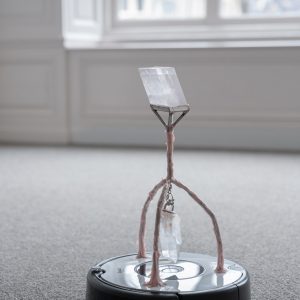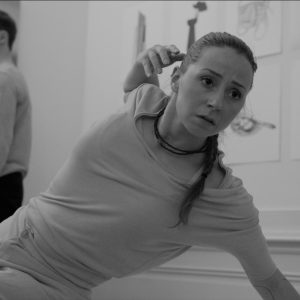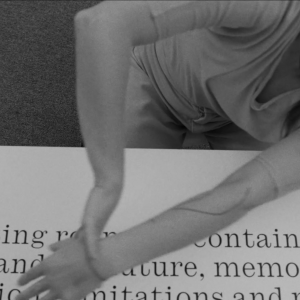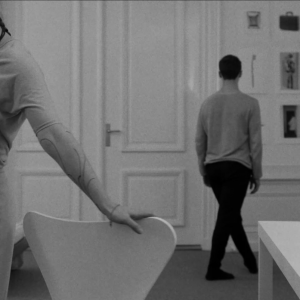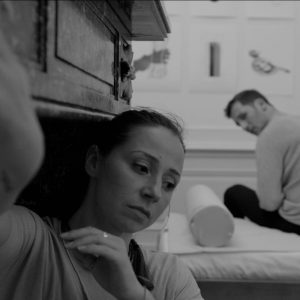Stripped to the essence and full of experience
Minimalist, clean, and capacious, Stripped to the essence was a rich experience spread across three sparse rooms. The exhibition guide and website gave little away in advance. The exhibition focussed instead on that feeling common to 2020, of becoming a human in a world unstuck in time.
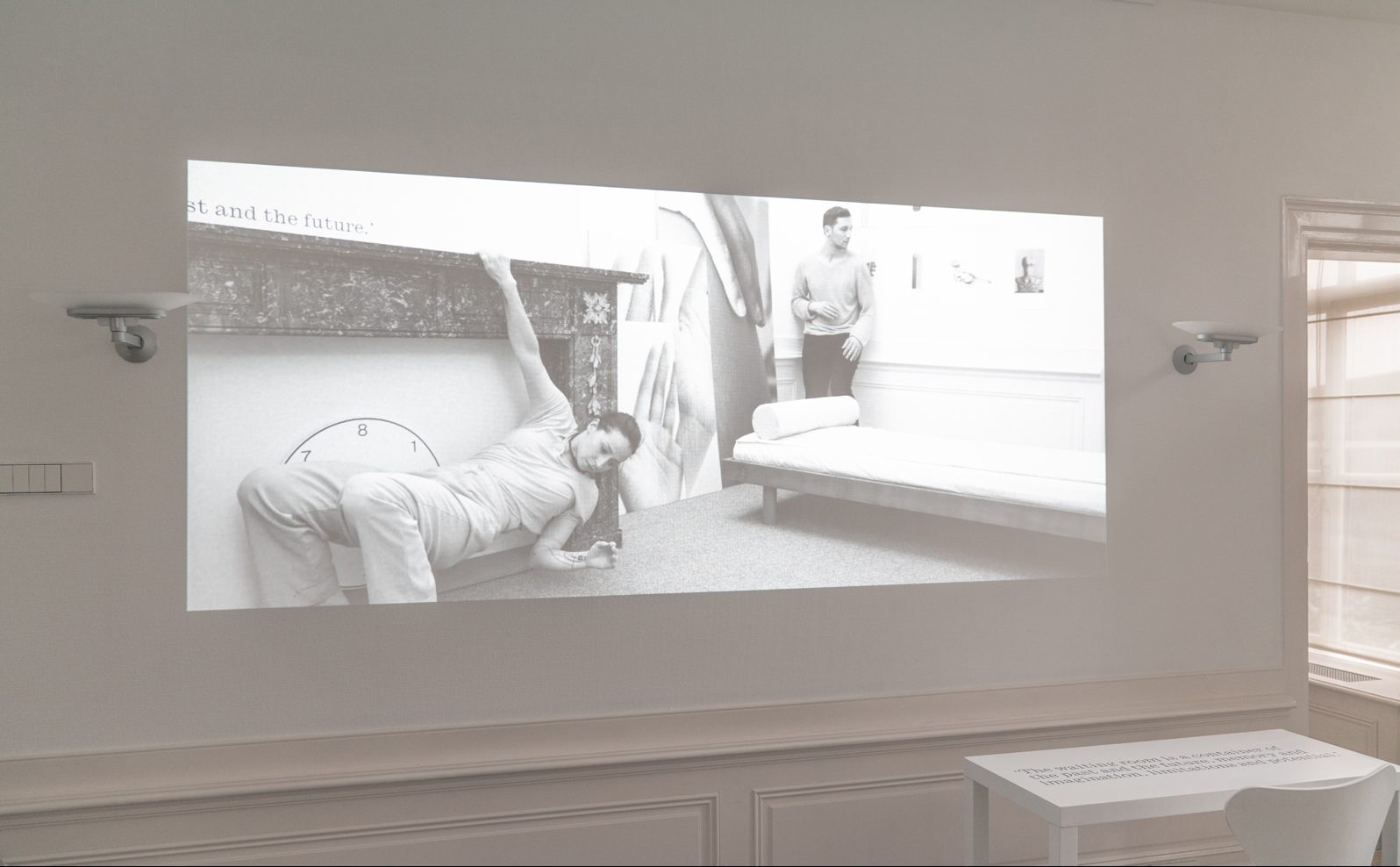
Reminding of us our past lives, the artists and curator came together through networks and full exhibition diaries. Curator Anastasia Loginova first saw Daniel van Straalen’s work at NEST in 2019 when he was partnered with Dutch art world veteran Wim T. Schippers. Anastasia and kunrad (Koenraad L. de Groot) studied together and now work together at the iii, and Anastasia knows graphic designer Anne Schaarschmidt from her graduation show, The Waiting Room, held in the same space (TV04, Toernooiveld 4) in October 2020. The idea for this exhibition exploring time and timelessness grew from Anne’s graduation work, the interior of TV04 and a desire to merge disciplines. I learned this as we spoke together, socially distanced, and seated on corporate carpet with the iii’s former fridge a warming and glowing fifth friend seated beside us, creating, as kunrad described, a campfire vibe.
You can be in your own waiting room, your own living room, and then come here to meet before in a different way, in a safe way. I think it’s really important to keep organising events, especially in these times. Anne Schaarschmidt
Images below of Anne Schaarschmidt’s graduation project The Waiting Room, taken by Batu Keskiner
The domesticity of the robot hoovers, a rumbling fridge and the intimate setting of someone’s bedroom/workroom/living room reinforced a sense of being (stuck) at home. Healing crystals added to the cleansing energy of the pirouetting hoovers. As curator Anastasia Loginova added, sound artist kunrad’s home-brewed ya bao tea was another element in the desired clarity, cleanliness and comfort of the exhibition.
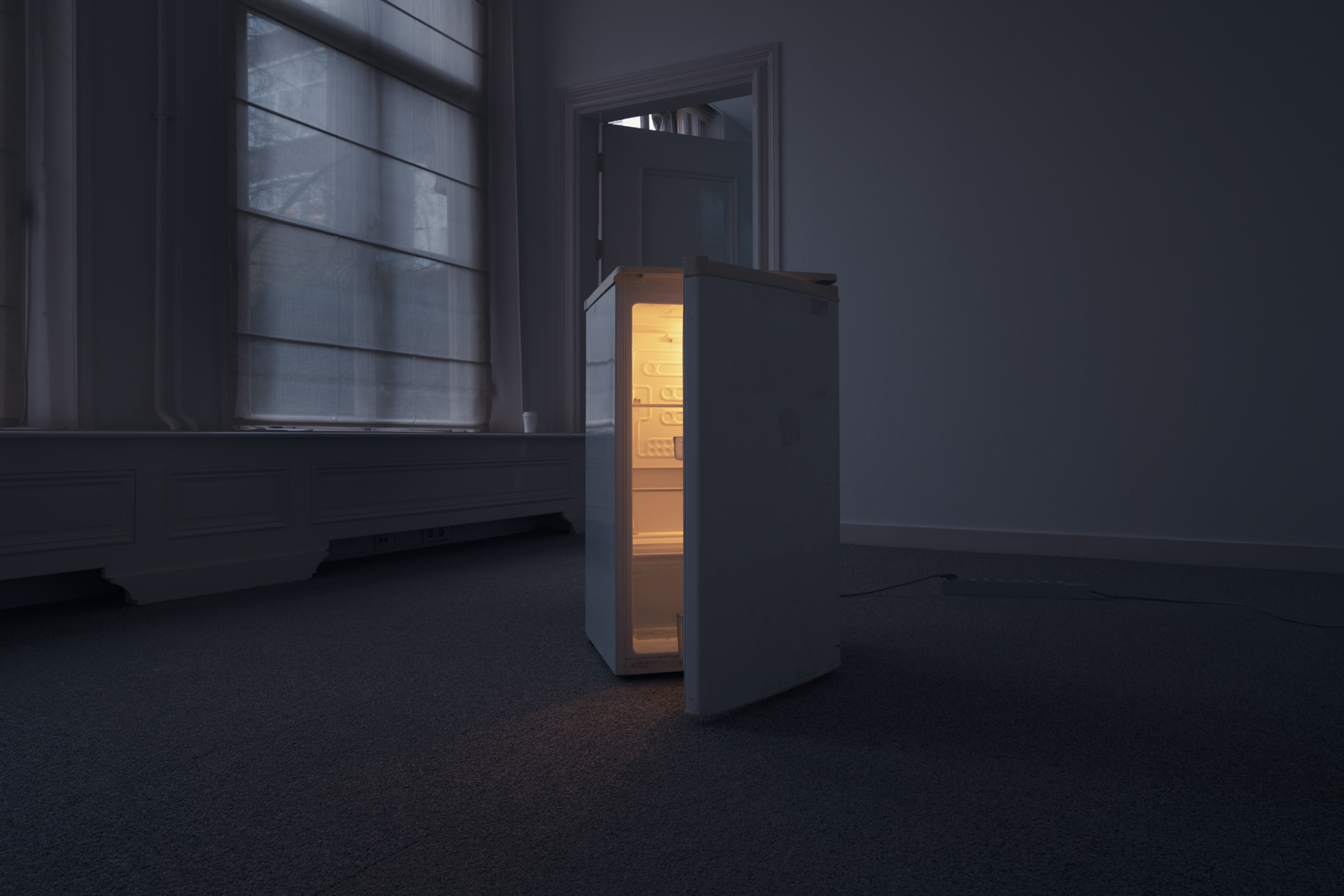
You sitting here, having a conversation, or in silence, the fridge also being a part of it, sharing something…it’s something a bit sacred…and there’s something really human about it. kunrad
Images by Batu Keskiner of kunrad’s fridge and home-brewed ya bao tea, as well as a photo by Anastasia taken during the interview for this article
A feeling of privilege emerged, of having or of not having. We were able to meet in an indoor space and to share a cultural experience when months ago, and for many, even now, the thought of this brings fear. A robot hoover is a luxury, a very millennial statement. Here there were two roaming the largest room. This was a place where scarcity and abundance met, in one of the Hague’s most illustrious postcodes, a stone’s throw away from the Dutch parliament.
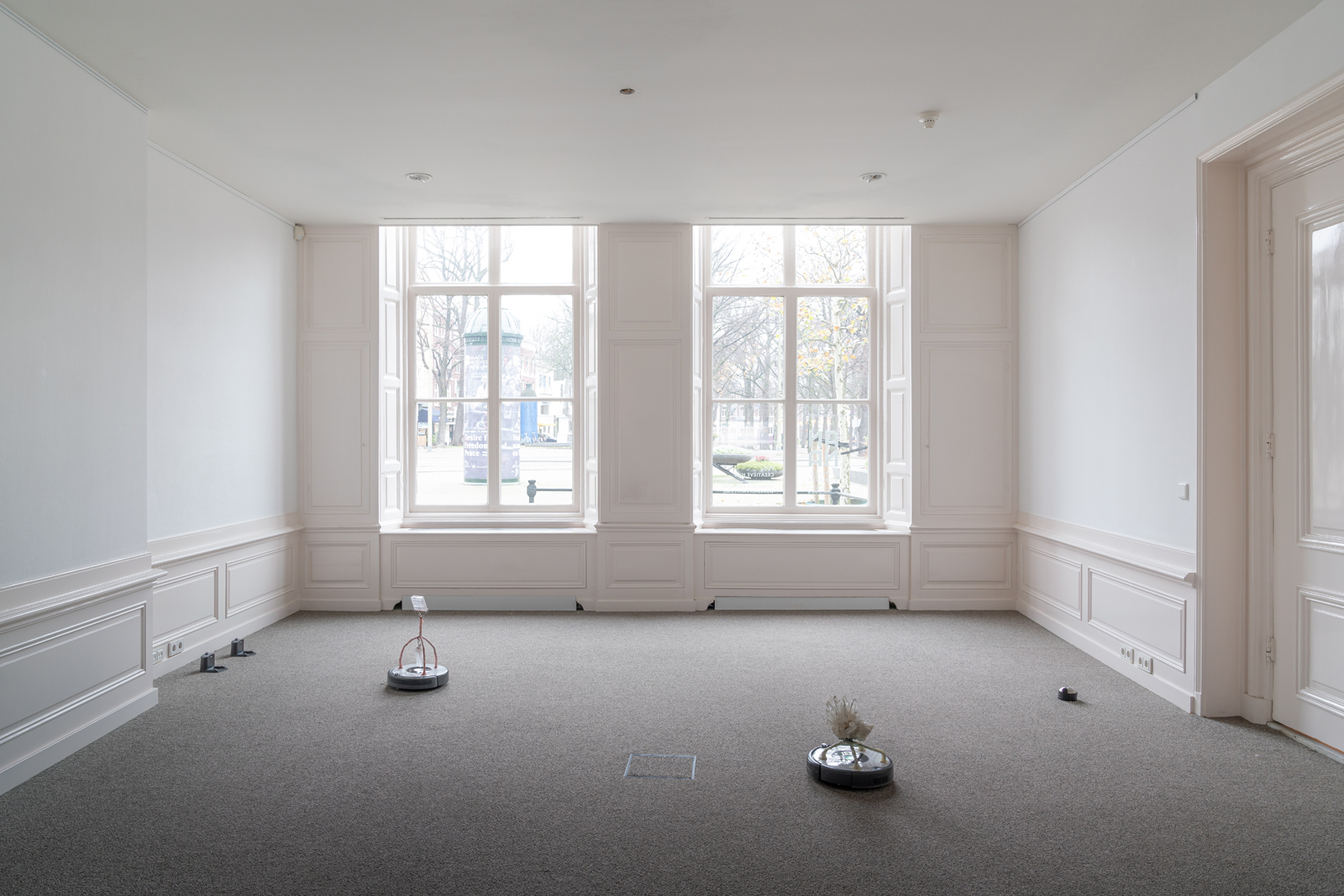
For me as a curator, it’s important to make an atmosphere that you are invited to be in. It’s not always about an object, it’s about the coming together of the space and the object, and the space in between. Anastasia Loginova
Images are of Daniel van Straalen’s robot hoovers, taken by Batu Keskiner
Yet in parallel, we shared the confines of Anne’s four-walled lock-down experience in The Waiting Room. We saw her desk, her chair, her single bed. In this setting, the frustration of confinement emanated from dancer Christie Partelow’s first performance (with Korzo dancer and choreographer Rutkay Özpinar accompanying on piano), as she restlessly explored the limits of the space and everything in it. When Rutkay Özpinar joined her for the second piece (with their performance mirrored in the video work projected on the wall) we experienced the real boundaries of space and identity, dependency and exhaustion, while being slightly unnerved as a voyeur on this intimate scene. Immersive theatre was one of Anastasia’s inspirations, which is seen in this curated intimacy of bringing art and dance together and of bringing a dancer’s world sometimes uncomfortably close to the audience.
I look for ways to create new experiences which are visceral, bodily, and which combine human bodies and non-human objects in a new way that might be a bit confrontational, or that might create a sense of estrangement. It’s through estrangement that we become more aware of what’s real and what’s not…it’s important to create surreal situations. Anastasia
The images below are stills of the projected film, by Nico de Voogd
On this cold Sunday, the space was vibrant, noisy, as full as it could be in corona times. Yet Anastasia was keen to point out the duality of the experience, of noise and movement versus stillness. Once the sound and movement of the dancers died away, we experienced the second way of seeing the exhibition. Questioning time in Anne’s impossible clocks, the stillness broken in bursts by Daniel’s hoovers exploring their empty room; kunrad’s fridge drifting in and out as a film of Christie and Rutkay’s duet silently plays out on the wall.
I’m always searching for sound. My profession is putting small sounds on a pedestal… I always try to orchestrate the whole experience. kunrad
The feeling of waiting to find out what the future looks like felt less frightening when discussing it round the campfire with Anne, kunrad and Anastasia. Kunrad’s fridge was a natural end to the experience. Comfortable on cushions on the floor, we were invited to focus on taste and touch, and sight and sound.
I wanted to accompany the sense of detail with a tea…Because it’s cold brew, it becomes sweet with a delicate taste, and it accompanies the feeling of the fridge very well…the cold is a big part of it. The cups are put in the freezer before being served. kunrad
Image by Batu Keskiner of kunrad’s ya bao tea
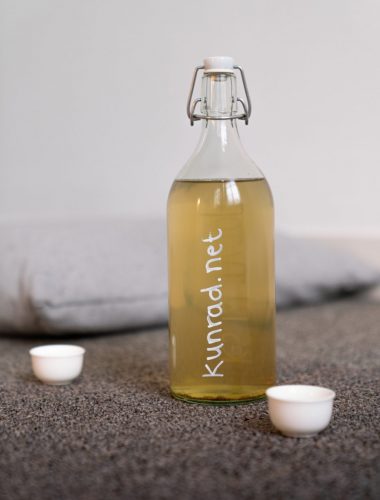
Anastasia posits dance as one way to better understand the abstractness of contemporary art. This was the first time Christie Partelow and Rutkay Özpinar have collaborated, though you easily could have thought that this was a well-established partnership. They had wanted to work together for a very long time, and this small, quiet exhibition in a quasi-lockdown setting gave them the chance.
The creation of art is changing, it is not an object to be looked at (and/ or eventually acquired), funding structures are changing. Why not have an entrance fee? It’s like taking a journey for the soul, you are paying for an experience, not to take something tangible home necessarily but to replenish the soul. This can be ephemeral, like taking a breathtaking trip, which leaves you with new sensations, memories. There is nothing to grasp, just the atmosphere. Anastasia
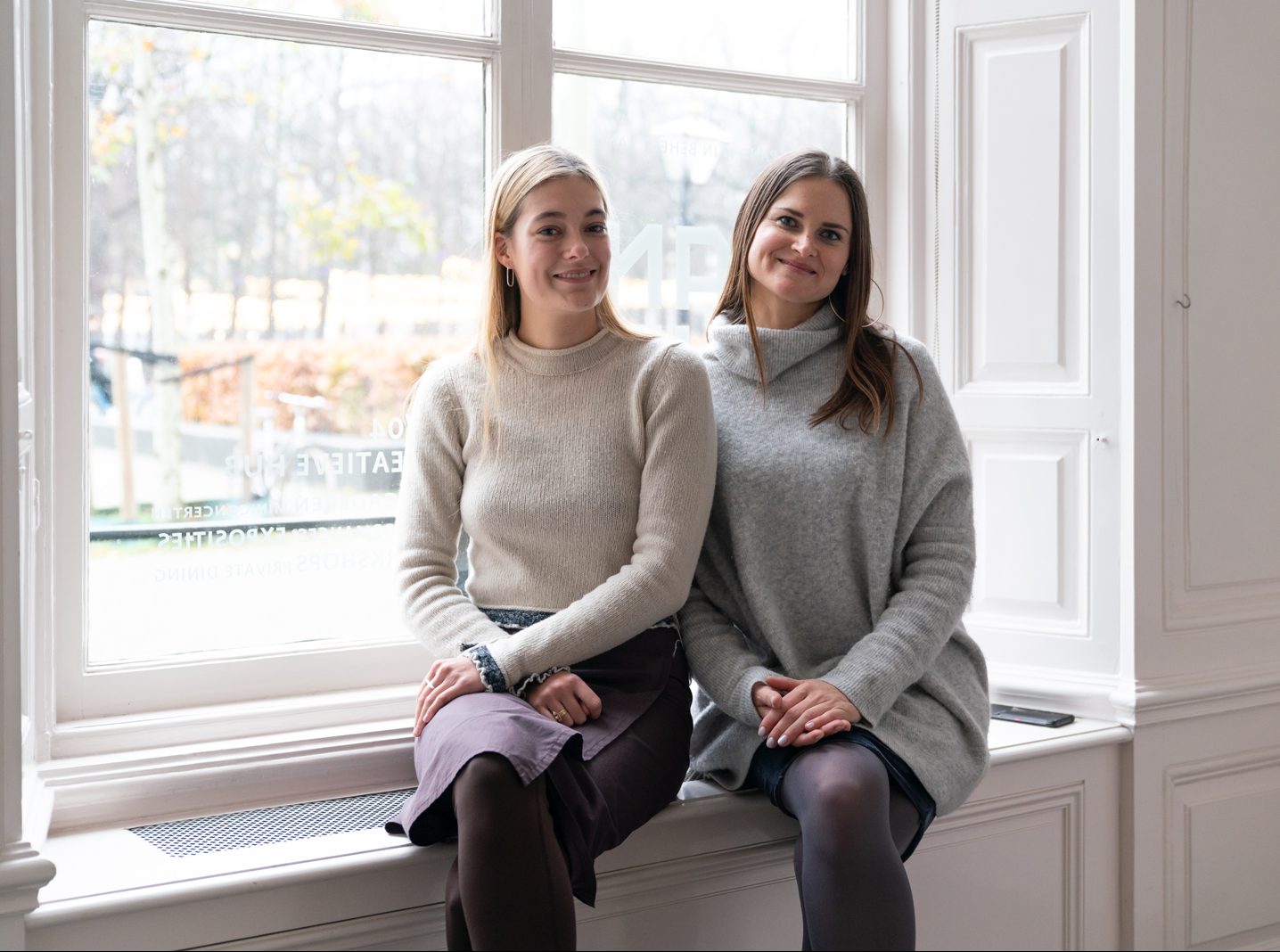
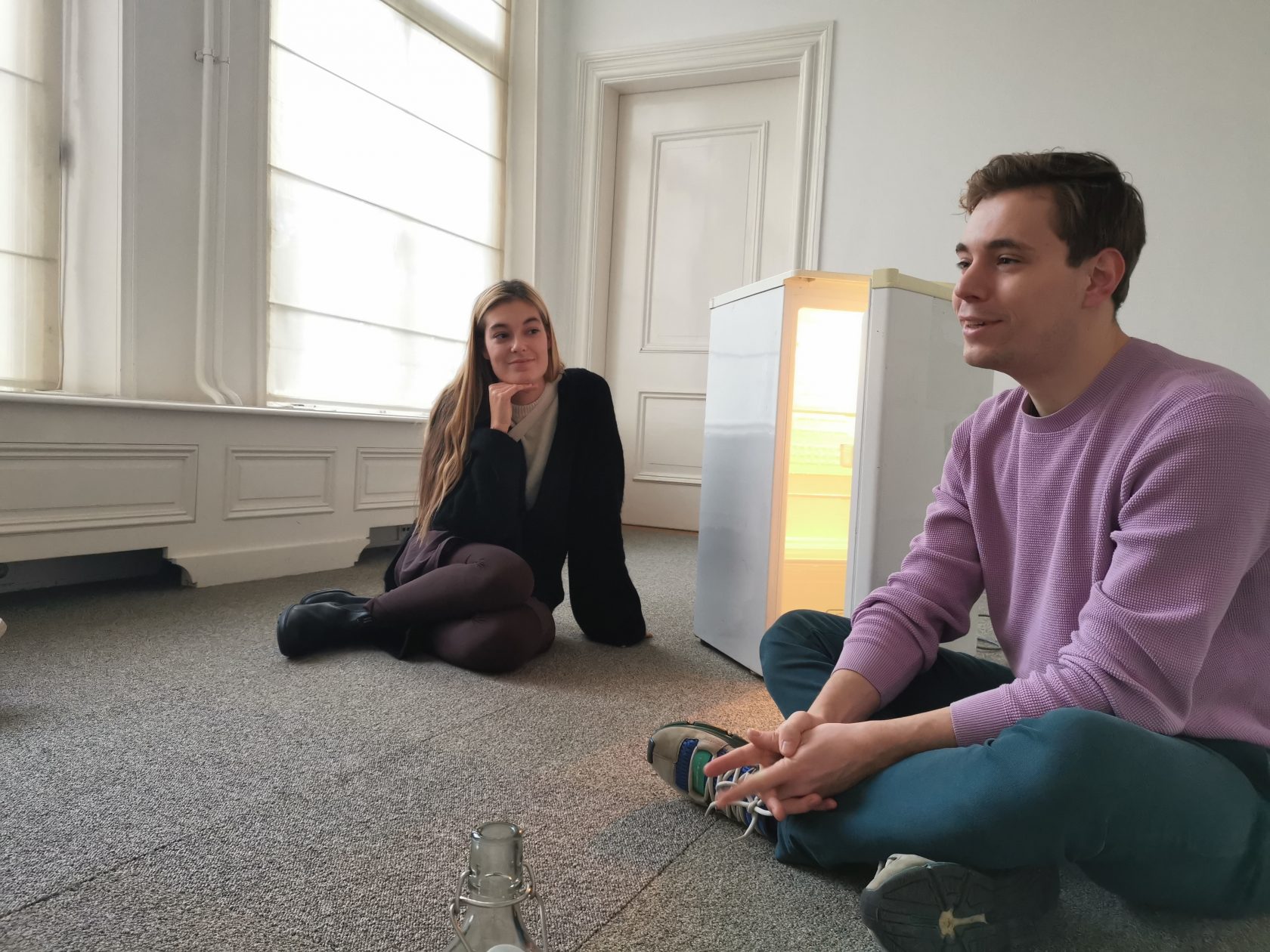
Stripped to the essence was, in its simplicity, a feat of courage and design in many ways: like in presenting this exhibition and performance to the public in a physical space when proximity seems alien and in forcing us to contemplate the time we’re in while we’re still experiencing it.
See the video below by Batu Keskiner for a taste of the exhibition, with choreography by Christie Partelow and Rutkay Özpinar.
This exhibition was a collaboration with Spot ON US, a new Stichting that offers a stage to young creators and helps them to develop their talents collectively. It was supported by ANNA Vastgoed & Cultuur and hosted in their new cultural hub TV04, Toernooiveld 4, Den Haag, between 27 and 30 November 2020.




